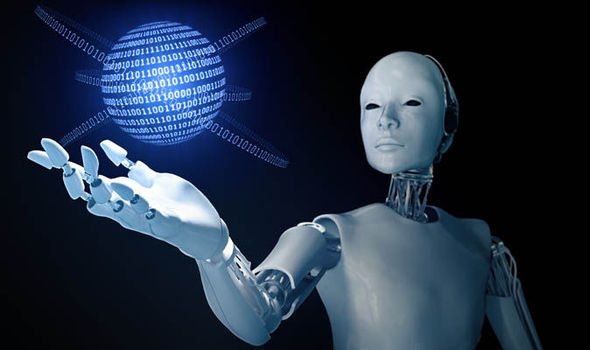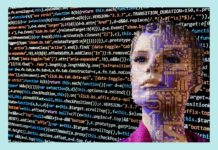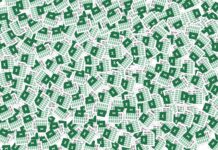Man-made intellectual ability (AI) can be described as knowledge shown by machines or programming. Yet the excursion for AI remains a precarious moving goal, there have been unquestionably speedy and basic degrees of progress in the fields of computer programming, progressed mechanics, neural-planning, increased insight, and various areas that undertaking to foster watchful lead or duplicate and work on human understanding. These new degrees of progress have been matched by excited discussions and polemics. A mission to Stop Killer Robots is advancing, including the concern that the AI development enabling autonomous weaponry “has shown up at a point where the headway of such systems is – fundamentally if not really – conceivable inside the space of years, relatively few years”. Various futurists moreover expect and fear the ascent of a creative eccentricity by 2045, where the refinement of AI limits will dispense with any separation among individuals and machines.
A less startling future – a fulfillment of the Millennium Challenge – is reserved for 2050, when it is expected a gathering of RoboCup humanoid robots will really need to conquer the FIFA World Cup champions. The start of life remains maybe humanity’s most essential mystery, jumbled by an undeniable chicken-and-egg problem: how might beginning phase, self-reproducing manufactured substances have to be composed into complex inherited developments expecting that these identical plans are fundamental for replication to occur? A rich objective to this peculiarity was proposed by Alexander Graham Cairns-Smith in 1985: the self-replication of mud pearls might address the missing association between naturally inactive matter and the improvement of normal life. Earth diamonds shield their external game-plan during improvement and regrowth; it was suggested that this limit could supply the means for basic replication; examples of normal particles got upon a jewel substrate. According to the theory, these regular particles gradually encouraged the multifaceted nature imperative to uninhibitedly deal with their own replication, eventually getting rid of the Darwinian groundbreaking cycles that drove in excess of an extensive stretch of time to all life, all things considered on Earth.
With respect to continuous conversations incorporating movements in AI, an upsetting relationship may be drawn: is humanity simply a wandering stone, comparative as the soil pearls, catalyzing the advancement of a cognizant and transcendent robot species? In assessing this closeness, we propose following the progression of indisputable top tier AI endeavors. Specifically, the RoboCup challenge gives an uncommon technique for surveying the formative heading of both hardware and programming structures, allowing us to focus in on their critical separations. RoboCup – the “World Cup” of robot soccer – was first proposed in 1997 as a standard issue for driving movements in the fields of AI, advanced mechanics and PC vision. It has exploded in conspicuousness in the years since, with late challenges attracting an overabundance of 40,000 visitors and individuals from north of 45 countries. RoboCup shows a couple of characteristics that remember it from the past AI benchmark (chess), to be explicit a one of a kind environment, consistent development, divided state acumen, non-delegate substantial data and scattered/multi-expert control. Fundamentally, RoboCup is allocated into two corresponding endeavors: genuine robot affiliations, focusing in on the progression of gear (totally epitomized AI); and programming subject matter expert (propagation) affiliations, focusing in on the improvement of virtual AI. RoboCup hence gives a unique stage to surveying the formative course of both gear and programming structures, the two of which are essential to fulfill the Millennium Challenge.
The justification for the diversion affiliations was to fill in as stages for the hidden development and evaluation of programming modules made arrangements for later fuse into genuine robots. An impressive parcel of these modules have applications past the RoboCup space, propelling expansion and replication by experts in the more broad field of current mechanical innovation and robotization – a multi-billion dollar industry where the limit with respect to a robot to “see”, “investigate” and make “astute” decisions is essential to both advantage and the prosperity of human partners. What’s more, various unique applications have emerged at the restrictions of evidently immaterial disciplines. For example, information speculative models made to assess dynamic associations in soccer matches have been applied to all the almost certain understand accumulating behavior of unpleasant little creatures, birds and fish to the extent that their total memory and long-range information falls. These models have also been applied in computational neuroscience to show the development and organization of the human brain, and to orchestrate demonstrative models recognized by “electronic noses”. In any case coincidental achievements and the best points, the gathering of sharp practices (made for the RoboCup diversion relationship) by real robots is surprising and has, apparently, moved back in pace.
For what reason would that be what is happening? One clarification is basically monetary, as depicted in another report which saw that nations with lower enlightening financing are basically under-tended to in genuine robot affiliations. Robots are overall exorbitant to purchase, stay aware of and transport, driving a high section check for these foundations and monetarily allotting the mechanical innovation research neighborhood. The result is a separated neighborhood to movements in virtual multi-expert AI, developing the edges of total coursed information at a speed which outperforms real robot improvements. Though monetary obstacles are of significant importance, this is totally by all record not by any means the only viewpoint that continues to seclude headway in the RoboCup amusement versus genuine affiliations. Basically, originators related with the reenactment affiliations can focus generously more effort on complex multi-expert AI computations, making new ground in the examinations of total scattered understanding. These enhancements mirror a huge example of essential AI updates: virtual AI encased inside PC associations can advance at a great deal faster rate than totally typified mechanized AI.
The clarification for this example is essential. For a significant level of mechanical animal categories to create, an example of self-improvement is principal for both programming and gear capacities (counting acumen, incitation and dealing with device). Yet quick to-sensational redesigns in AI are legitimate inside a never-endingly creating computerized association, it is difficult to envision gear progressing at a satisfactory rate as to engage the exemplification of this information inside a real robot. Such improvements are basically constrained by the laws of nature, and in any event, programming updates will eventually encounter the information thermodynamic requirements of computation. That is the way robots will assume control over mankind.
By Akash Devneel Narayan
Write and Win: Participate in Creative writing Contest & International Essay Contest and win fabulous prizes.
















